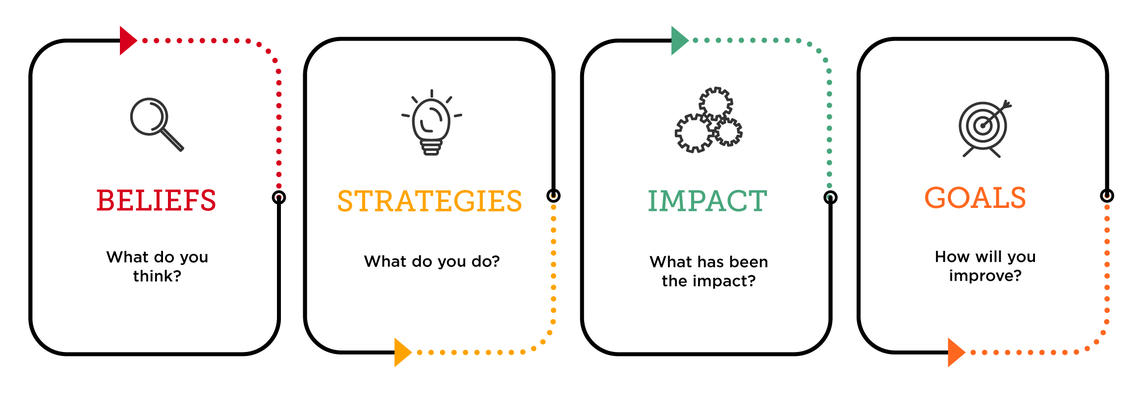Writing a Teaching Philosophy Statement
Dr. Natasha Kenny, PhD, Taylor Institute for Teaching and Learning
September 2015
Teaching philosophy statements clearly communicate what our fundamental beliefs are about teaching and learning; why we hold these beliefs; and, how we put them into practice. Teaching philosophy statements can be used for a variety of purposes such as: job applications, as a foundational element of a teaching portfolio, within the context of tenure and promotion reviews, and for teaching award applications. Perhaps most importantly, teaching philosophy statements support our own growth and development as educators by providing us with an opportunity to reflect upon and communicate why we do what we do to support teaching and learning (Beatty et al., 2009). They provide a powerful tool to communicate our teaching and learning beliefs and approaches to ourselves, to our peers, and perhaps most importantly, to our students.
Preparing a teaching philosophy statement can be challenging. Although there are no hard and fast rules, teaching philosophy statements are typically presented as a 1-2 page reflective, first-person narrative. Building upon the work of Schonwetter et al. (2002), I have found it useful to communicate the structure of a teaching philosophy statement around 4 key components: beliefs, strategies, impact and goals.

Figure 1: Example structure for a teaching philosophy statement
Based upon this framework, the introductory section of a teaching philosophy statement summarizes your core beliefs about teaching and learning, and describes why you hold these beliefs based on personal experience, and scholarly literature related to teaching and learning in higher education. The next section provides an overview of specific strategies that you use in your practice that actively demonstrate and align with these beliefs. The final sections highlight the impact that your teaching and learning approaches have had on yourself and others (e.g. students and colleagues). This section may also highlight the methods you use to assess and evaluate your teaching. Finally, the concluding section most often summarizes your key beliefs, and highlights your goals and commitment to continuous growth and improvement. Table 1 provides a further break down of each of these sections with some guiding questions for further reflection.
Philosophy statement components
What are my beliefs about teaching and learning in post-secondary education? Why do I hold these beliefs? Who or what has most informed my teaching approaches? How have my beliefs been influenced by my teaching experiences and/or scholarly literature related to teaching and learning? What difference do I hope to make as a teacher? What does it mean to be a good teacher in a post-secondary context? What does good teaching look like in my discipline? What does it mean to be a good learner in a post-secondary context?
What teaching and learning strategies do I use? How do these strategies align with my beliefs? When have I felt most engaged and affirmed as an instructor? What are my key strengths and skills as an instructor? What am I most proud of? What sets me apart? What are some of my accomplishments as a post-secondary educator?
What difference have I made, and how do I know? What has been the impact of my approaches to teaching and learning (on me, on students, on colleagues)? What have others learned from my teaching and learning approaches? What methods do I use to evaluate my impact?
How will I continue to develop, grow, and improve as an educator? What interests me most about teaching in post-secondary education? What are my future goals and aspirations as an instructor in post-secondary education?
Guiding questions adapted from: Kearns, K.D. & Sullivan, C.S. (2011); Kenny, Jeffs & Berenson (2015); Stavros & Hinrichs (2011); Schonwetter et al. (2002); Seldin, P., Miller, J. E., & Seldin, C. A. (2010).
In the end, there is no one way to create and/or present a teaching philosophy statement. However, a teaching philosophy statement should provide a sense of clarity, meaning, and resonance related to why you do what you do to support student learning. They should provide an authentic representation of your educational beliefs, approaches, and impact, and continue to evolve as your experiences progress.
Related content
Sample Teaching Philosophy Statements
What Makes a Great Teaching Award Nomination Dossier?
References
Beatty, J.E., Leigh, J.S.A., and Dean, K.L. (2009). Finding our roots: an exercise for creating a personal teaching philosophy statement. Journal of Management Education, 33(1), 115-130.
Kearns, K.D. and Sullivan, C.S. (2011). Resources and practices to help graduate students and postdoctoral fellows write statements of teaching philosophy. Advances in Physiology Education, 35, 136-145.
Schonwetter, D.J., Sokal, L., Friesen, M., & Taylor, L.K. (2002). Teaching philosophies reconsidered: A conceptual model for the development and evaluation of teaching philosophy statements. International Journal for Academic Development, 7(1), 83-97
Seldin, P., Miller, J. E., & Seldin, C. A. (2010). The teaching portfolio: A practical guide to improved performance and promotion/tenure decisions. John Wiley & Sons.
Stavros, Jacqueline M, & Hinrichs, Gina. (2011). The Thin Book Of SOAR: Building Strengths-Based Strategy: Thin Book Publishing.
